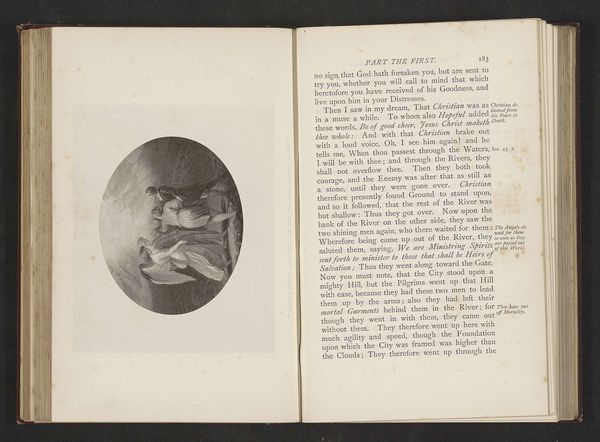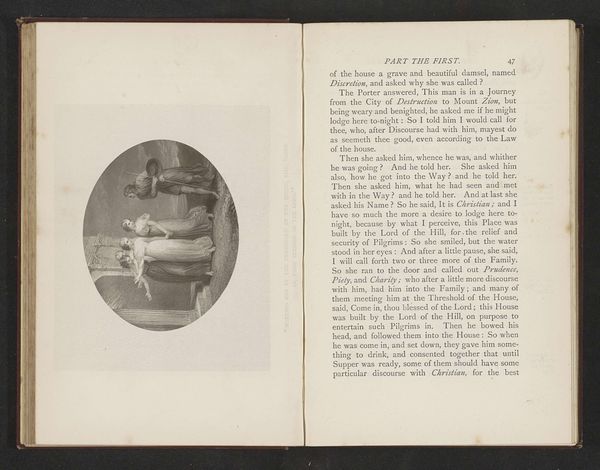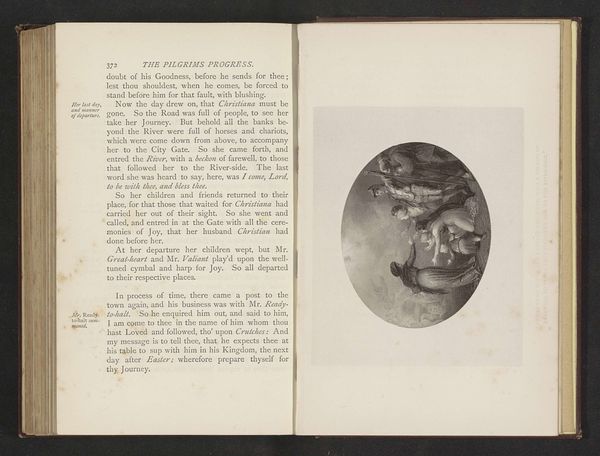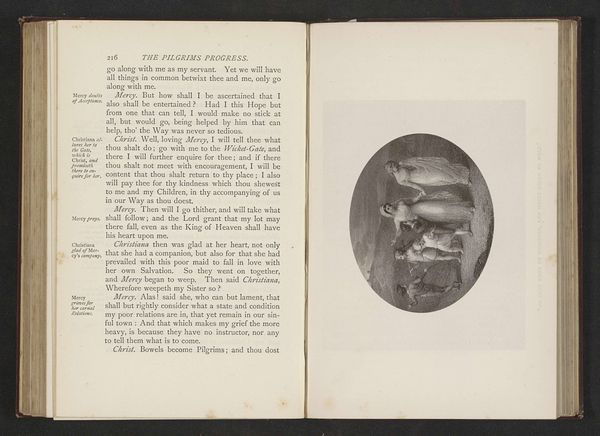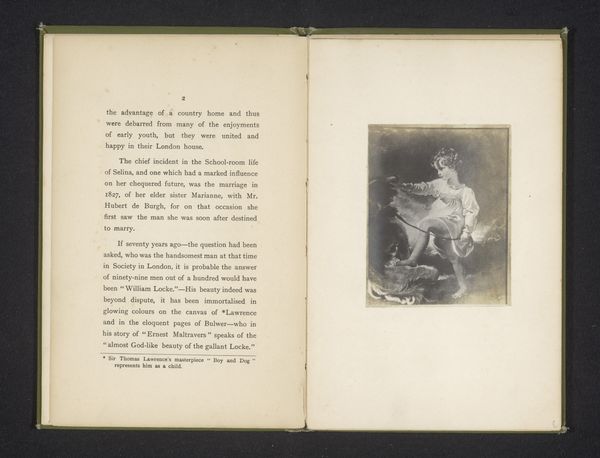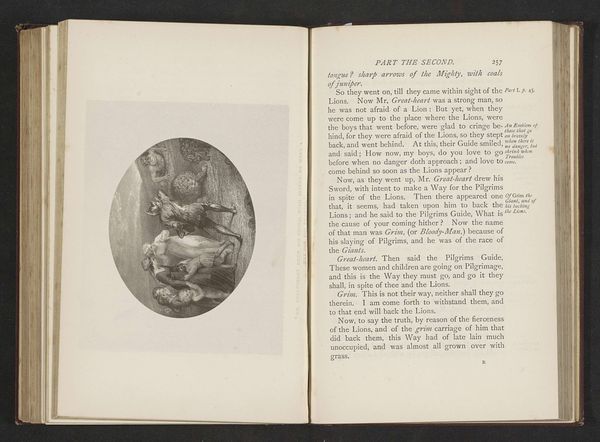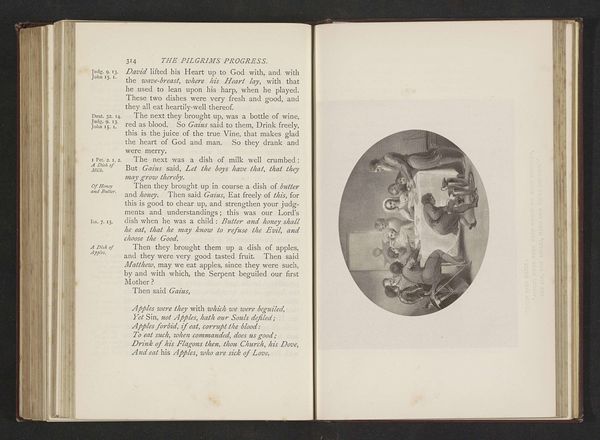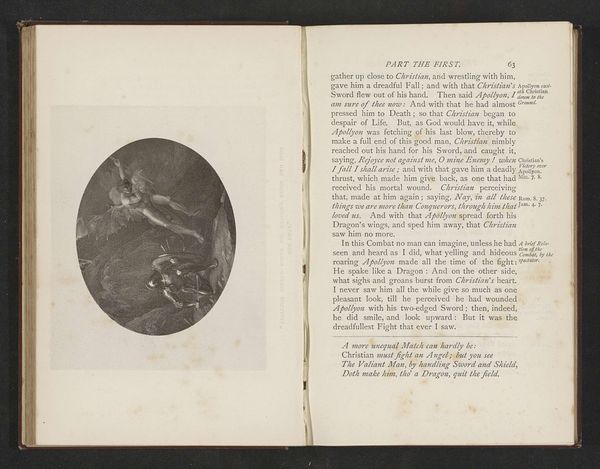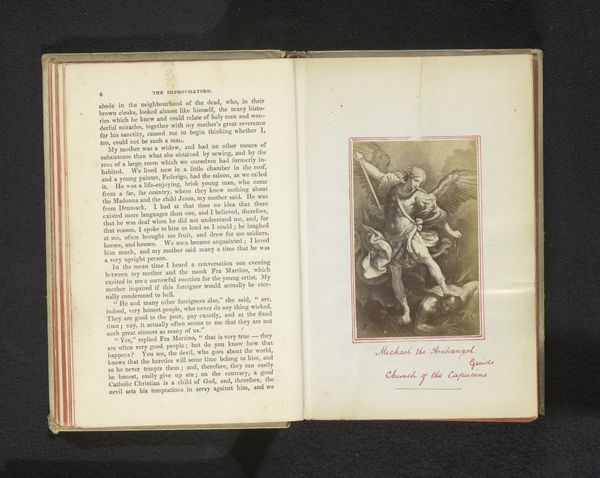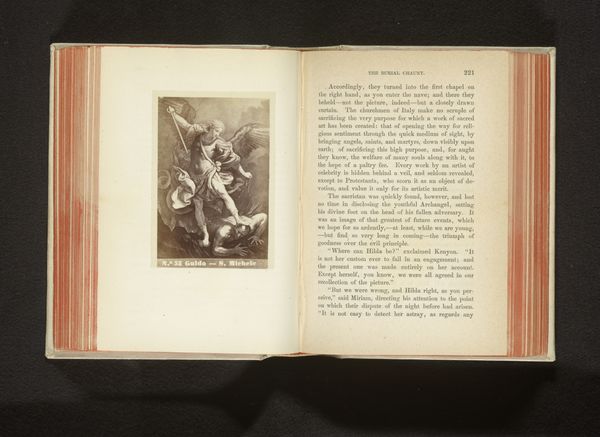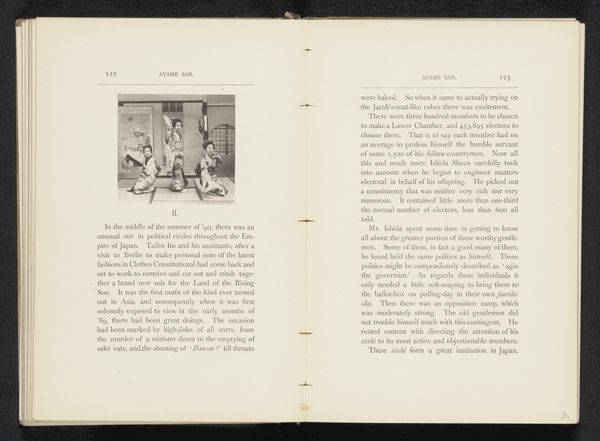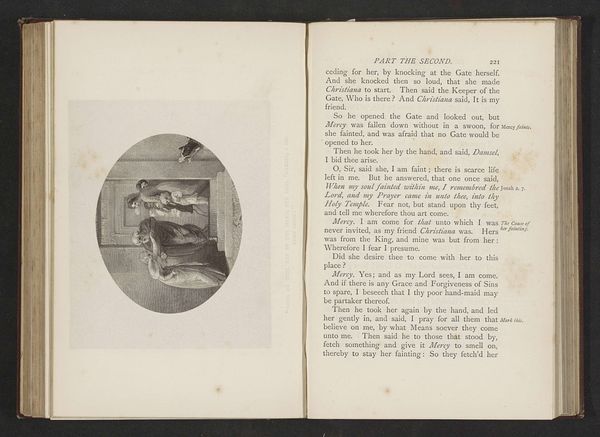
Fotoreproductie van een illustratie door Thomas Stothard voor Eens Christens reize naar de Eeuwigheid door John Bunyan before 1881
0:00
0:00
Dimensions: height 78 mm, width 96 mm
Copyright: Rijks Museum: Open Domain
Curator: This open book displays a reproduction of an illustration created before 1881 by Thomas Stothard, originally intended for John Bunyan’s "The Pilgrim’s Progress." The reproduction technique employed here seems to be a lithograph, though potentially involving elements of etching and engraving on paper. What's your initial take on it? Editor: Bleak. Stark. The monochrome image, framed within an oval, creates an immediate sense of something otherworldly, perhaps a vision. There is an unmistakable ethereal quality about it, mostly produced with skillful tonal control and simple mark making. Curator: Exactly. Focusing on the materiality, the paper, the ink, and the methods of reproduction—lithography, etching, and engraving—highlight the transformation of Stothard’s initial vision into a mass-producible format. Each reproduction alters the labor and the act of consumption for the public. These processes mediated the artistic value by increasing distribution. Editor: It's all about capturing the essence of Romanticism: drama and emotion through composition. We have the woman below, recumbent, perhaps dreaming. Above, the soaring figures hinting at a spiritual realm. It's this duality that defines the piece—earthbound versus celestial. A visual representation of Bunyan’s religious allegory. I am very keen to break it into sections and think through their arrangement here. Curator: Absolutely, the allegorical elements were part of Bunyan’s larger narrative but the material form enables new consumption. We should recognize its place among printed media in Victorian England, with technological and industrial advancement being increasingly embedded within the visual and literary culture of the time. Cheap reproduction allowed it to speak to an increasingly literate public with less disposable income. Editor: For me, stripping it to its visual form yields far greater insights, rather than considering context alone. The sharp contrast, the almost brutal definition given by the lines and tones. All those create a dramatic tension perfectly in sync with the narrative and create what, I'd argue, is a more emotional experience. Curator: Perhaps in the tension between process and product we recognize an insight into visual meaning-making, in order to inform interpretations. Editor: Perhaps by combining both formal introspection with contextual considerations can help a wider range of viewers appreciate this artwork.
Comments
No comments
Be the first to comment and join the conversation on the ultimate creative platform.
